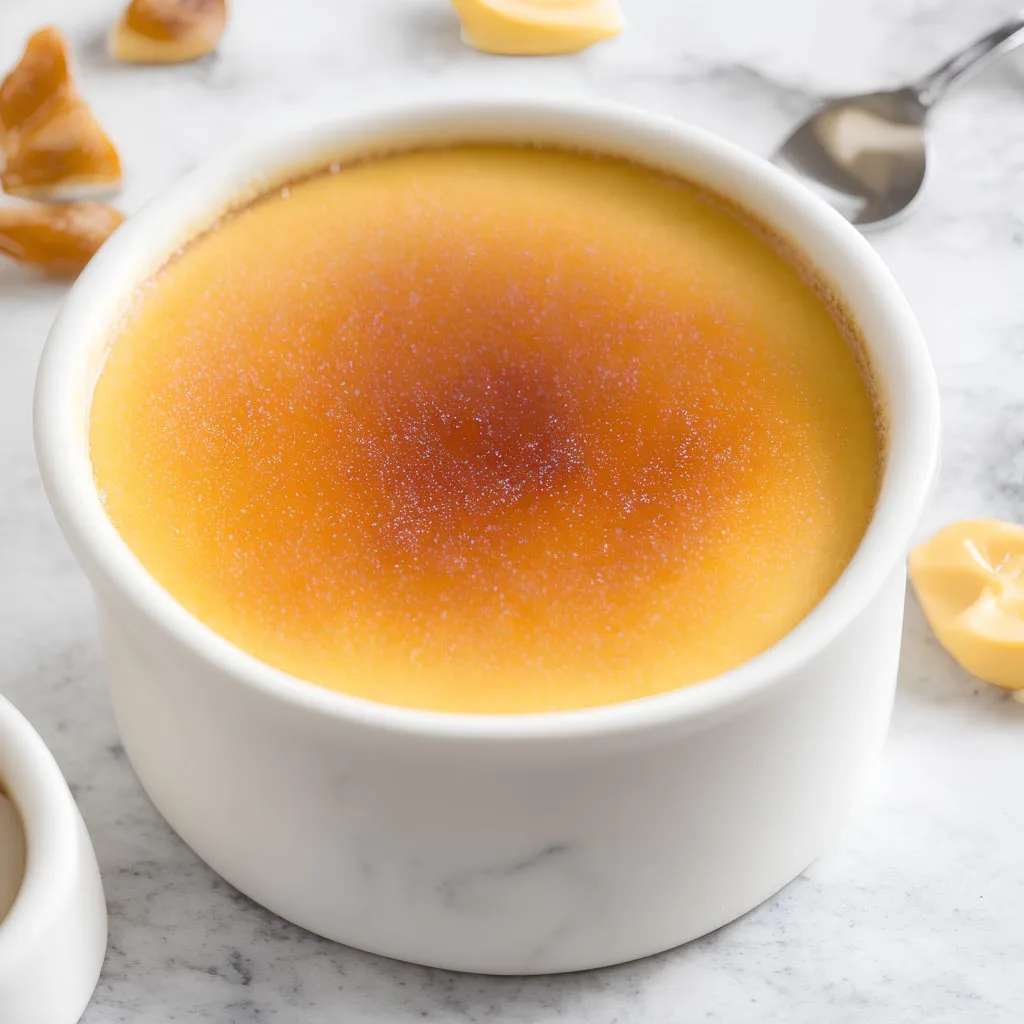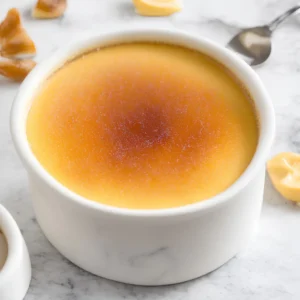
Creme Brulee, a timeless classic in the world of desserts, has been delighting taste buds for centuries. Originating from France, this delectable treat has a rich history that dates back to the 17th century.
The name “Creme Brulee” itself translates to “burned cream,” a nod to its signature caramelized sugar topping that provides the perfect contrast to the creamy custard beneath.
This tantalizing dessert may seem intimidating to make at first glance, but fear not, for it is surprisingly simple to prepare. With just a handful of ingredients – eggs, sugar, cream, and vanilla – you can create a dessert that is sure to impress even the most discerning palates.
The recipe difficulty lies in achieving the perfect balance of flavors and textures, from the smooth custard base to the crackling sugar crust that shatters with each spoonful. But fear not, for with a little patience and practice, you can master the art of making a divine Creme Brulee that will have everyone clamoring for seconds.
Treat yourself and your loved ones to a taste of luxury with a homemade Creme Brulee? Whether you’re hosting a dinner party or simply looking to indulge in a decadent dessert, this iconic treat is sure to satisfy your sweet tooth and leave a lasting impression.
Expert Tip: Ensure the cream mixture doesn’t come to a full boil; just let it simmer gently. Overheating can cause the cream to curdle.
Double Cream: Double cream is a rich dairy product with a high fat content, typically around 48%. It is thicker and creamier than regular heavy cream, making it perfect for adding a luxurious and velvety texture to desserts like creme brulee. The high fat content in double cream helps to create a smooth and rich custard base for the dessert.
Egg Yolks: Egg yolks are used in creme brulee to add richness and a creamy texture to the dessert. They also act as a natural thickening agent, helping to create a smooth and silky custard. The yolks also contribute to the classic golden color of creme brulee once it has been baked and caramelized.
Sugar: Sugar is a key ingredient in creme brulee, providing sweetness and helping to balance out the rich flavors of the cream and egg yolks. It also plays a crucial role in creating the caramelized topping that gives the dessert its signature crunch. Caster sugar is often used in creme brulee recipes for its fine texture, which dissolves easily into the custard mixture.
Vanilla Extract: Vanilla extract is added to creme brulee to infuse the custard with a warm and aromatic flavor. It enhances the richness of the dessert and adds a subtle sweetness. Using high-quality vanilla extract will ensure that the creme brulee has a deliciously fragrant and full-bodied vanilla taste.
Salt: A pinch of salt is often added to creme brulee recipes to enhance the other flavors in the dessert and provide a balance of sweetness and richness. Salt helps to amplify the vanilla and cream flavors, making the creme brulee taste more complex and flavorful.
Expert Tip: When pouring the hot cream into the egg mixture, do it slowly and whisk constantly to avoid cooking the eggs and creating lumps.
For serving suggestions, consider garnishing the creme brulee with fresh berries such as raspberries or strawberries for a pop of color and added sweetness. Sprinkling some finely grated lemon or orange zest on top can also add a refreshing citrus flavor to contrast with the richness of the dessert.
You can also serve the creme brulee with a dollop of whipped cream or a scoop of vanilla ice cream for an extra indulgent treat.
For variations on the classic creme brulee recipe, you can experiment with different flavors by infusing the cream with ingredients such as lavender, chai tea, or cinnamon sticks before adding it to the egg yolk mixture.
For a fun twist on presentation, consider using mini ramekins or Mason jars instead of traditional ceramic dishes to create individual-sized portions that are perfect for entertaining.
Expert Tip: When caramelizing the sugar on top, keep a close eye on it to prevent burning. Rotate the ramekins if needed for even caramelization.
Creme brulee is a rich and creamy dessert made with a custard base that is topped with a layer of caramelized sugar.
To caramelize the sugar on top of creme brulee, you can use a kitchen blowtorch or place the ramekins under a broiler for a few minutes until the sugar bubbles and turns golden brown.
Yes, you can make creme brulee in advance. It is best to caramelize the sugar just before serving to ensure a crisp top layer.
Can I use a different type of sugar for the caramelized topping?
You can experiment with different types of sugar for the caramelized topping, such as brown sugar or flavored sugars like vanilla or lavender sugar.
Can I add different flavors to the creme brulee base?
Yes, you can infuse the creme brulee base with different flavors like vanilla, citrus zest, or spices like cinnamon or nutmeg for a unique twist on this classic dessert.
Here are some more recipes for you to enjoy! If you my recipes don’t forget to rate and leave a comment.
If you have any recipe suggestions, please do not hesitate to ask me. A great way to stay in contact with me is through Instagram, Facebook, Twitter and YouTube. Don’t forget to tag me @CookwithNabeela in your recipe photos!

Subscribe now to receive my latest recipes directly in your inbox. Stay up-to-date and never miss out!

I love to cook! I want to share with you my favourite, delicious family-friendly recipes. I want to inspire you to create fantastic food for your family every day.
Add your first comment to this post